Machine Learning: Simplest Understanding
 Md. Musfikur Rahman Sifar
Md. Musfikur Rahman Sifar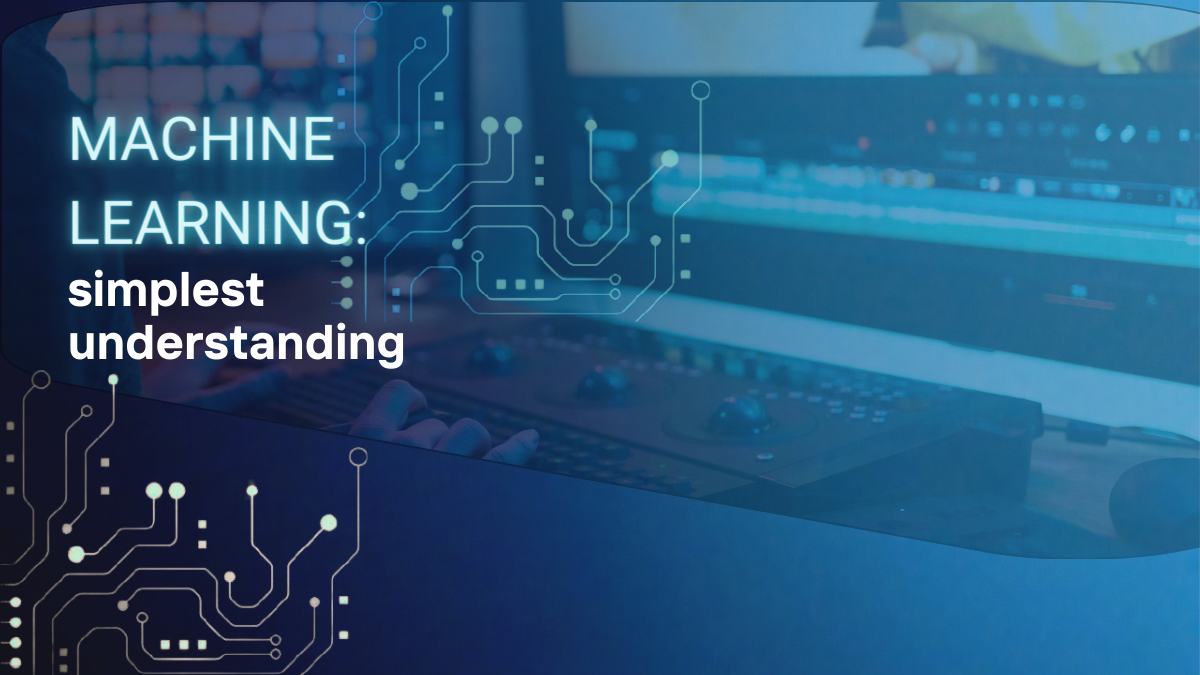
Machine Learning the word itself says what it is - A machine is learning to do stuffs. But how, what? Does machine go to school. Well not exactly, let's take a dive----
Intuition:
Once upon a time in a bustling culinary school, there were three aspiring chefs eager to master the art of cooking. Each chef had their own unique approach to learning and creating dishes, mirroring the principles of machine learning in a kitchen setting.
Chef 1: The Recipe Follower
Chef 1, let's call him Jamie, was a meticulous follower of recipes. He believed in the power of guidance. With a stack of recipe books in hand, Jamie diligently followed each recipe, using labeled ingredients to create mouthwatering dishes. Whether it was a classic lasagna or a decadent chocolate cake, Jamie's dishes always turned out perfect, thanks to his adherence to the prescribed instructions. Over time, Jamie noticed a pattern among the recipes. After analyzing numerous recipes, he discovered a formula: meat plus vegetable plus oil equals to a dish. This formula became Jamie's guiding principle, allowing him to create new dishes with ease by applying the same formula to different ingredients.
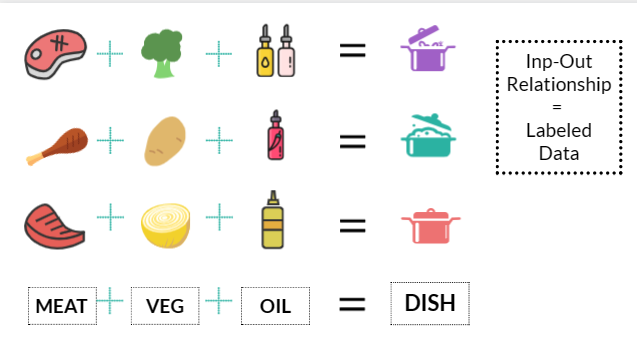
Chef 2: The Ingredient Explorer
Chef 2, known as Alex, took a more experimental approach to cooking. He saw cooking as an adventure. With a curious spirit and a pantry full of ingredients, Alex set out to discover new flavor combinations and culinary possibilities. He tossed ingredients together, tasted, and adjusted, allowing the natural properties of the ingredients to guide his creations. From bold salads to fusion stir-fries, Alex's dishes were a testament to the creative potential of exploring ingredients without predefined recipes.

Chef 3: The Feedback Connoisseur
Chef 3, affectionately called Sam, believed in the power of feedback. He understood that cooking was not just about following recipes or experimenting with ingredients but also about learning from experience. With a keen eye for detail and a team of taste testers by his side, Sam meticulously crafted dishes, seeking feedback on taste, presentation, and overall satisfaction. He adjusted his cooking techniques, ingredients, and flavors based on the feedback received, striving to improve with each dish he made. From savory stews to delicate desserts, Sam's dishes were a testament to the iterative process of learning and refinement.

Correlation with the concepts:
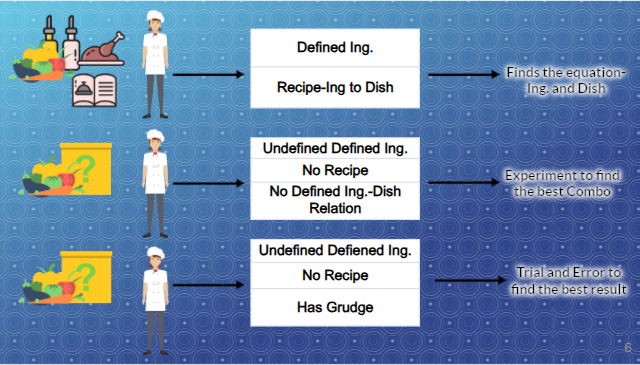
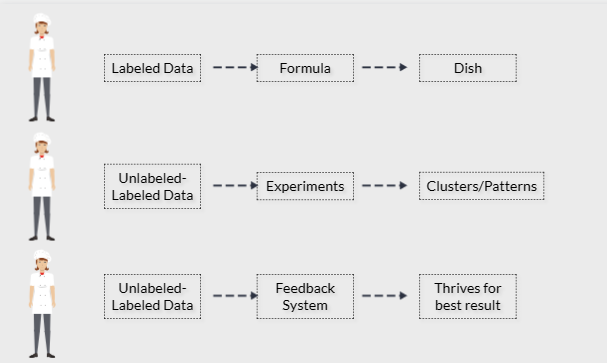
A machine works in the same way, you input the data and based on unlabeled and labeled you put the proper algo in the machine then the machine learns the inner equation, analyze or trains to act so that it could make prediction or give insights or make decision on its own.

Labeled Data: In machine learning, labeled data refers to a dataset where each example is paired with a label or outcome. In the culinary analogy, labeled data represents recipes with clear instructions and identified ingredients.
Unlabeled Data: Unlabeled data refers to a dataset where examples are not paired with labels or outcomes. In the culinary analogy, unlabeled data represents ingredients without predefined recipes or instructions. Just some ingredients.
Supervised Learning: Supervised learning is a machine learning approach where the algorithm learns from labeled data to predict outcomes or labels for new, unseen data. Chef 1's method of following recipes closely resembles supervised learning, as he relies on labeled ingredients and outcomes and establishes clear connections between them. Finally uses that create dishes.
Unsupervised Learning: Unsupervised learning involves exploring and discovering patterns in unlabeled data without predefined outcomes. Chef 2's experimental approach to cooking mirrors unsupervised learning, where he explores ingredients freely to uncover new flavor combinations and culinary possibilities without explicitly defined relationships or connections.
Reinforcement Learning: Reinforcement learning is a learning paradigm where an agent learns to take actions in an environment to maximize rewards over time. Chef 3's method of seeking feedback and adjusting his cooking techniques based on taste testers' responses aligns with reinforcement learning, as he adapts his strategies to improve the quality of his dishes based on the feedback received.
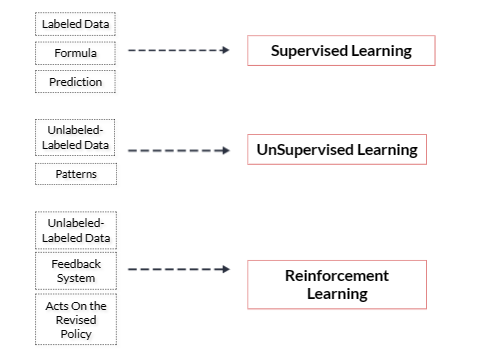
More Classifications:
Above we saw basically classification of ML based on input which is the most important. But there are other classification based on many other criteria. Just to show you:
Based on Input Data:
Supervised Learning
Unsupervised Learning
Semi-supervised Learning
Reinforcement Learning
Based on Learning Approach:
Online Learning
Batch Learning (or Offline Learning)
Based on Model Construction:
Instance-based Learning
Model-based Learning
Based on Learning Strategy:
Incremental Learning
One-shot Learning
Based on Data Types:
Homogeneous Learning
Heterogeneous Learning
Based on Meta-learning:
- Meta-learning
Based on Model Complexity:
Parametric Models
Non-parametric Models
Based on Algorithm Performance:
Lazy Learners
Eager Learners
Based on Learning Style:
Lazy Learning
Eager Learning
Based on Model Representation:
Symbolic Learning
Connectionist Learning
Based on Optimization Technique:
Gradient-based Learning
Evolutionary Algorithms
Based on Model Interpretability:
White-box Models
Black-box Models
Based on Training Method:
End-to-End Learning
Multi-stage Learning
Based on Transfer Learning:
Transfer Learning
Multitask Learning
Based on Ensemble Methods:
Bagging
Boosting
Stacking
Based on Data Distribution:
Stationary Learning
Non-stationary Learning
Based on Learning Paradigm:
Inductive Learning
Transductive Learning
Based on Temporal Data:
Time Series Analysis
Sequential Learning
Based on Fuzziness:
- Fuzzy Learning
Based on Learning Mechanism:
- Heuristic Learning
Phhewww...That's a lot. These classifications cover various aspects of machine learning algorithms, providing insights into how they operate and learn from data. Depending on the problem domain and requirements, practitioners can choose the most suitable approach for their applications. Don't need to know every...just for you to see.
Let's try to have a bit idea about the most important ones:
Based on Input Data: Understanding how data is structured and utilized in machine learning tasks is fundamental. Supervised, unsupervised, and reinforcement learning represent the primary ways in which algorithms interact with data.
| Machine Learning Type | Description | Analogy |
| Supervised Learning | Learning from labeled data, where each example has a known output. The algorithm learns to map input data to output labels based on provided examples. | Imagine a classroom where the teacher provides labeled examples for students to learn patterns by associating each example with its correct label. |
| Unsupervised Learning | Learning from unlabeled data, where the algorithm tries to find patterns or structures without explicit guidance. The goal is to uncover hidden insights within data. | Think of a treasure hunt where explorers must analyze a map to uncover hidden patterns without prior knowledge of what they're searching for. |
| Reinforcement Learning | Learning to interact with an environment to achieve a goal, receiving feedback in the form of rewards or penalties. The algorithm learns to take actions to maximize rewards over time. | Picture a game where a player learns by receiving rewards for good moves and penalties for mistakes, aiming to maximize total rewards over time. |
Based on Learning Approach: Knowing how algorithms learn from data—whether in real-time or batch processing—is essential for designing efficient and scalable machine learning systems.
| Machine Learning Type | Description | Analogy |
| Online Learning | Continuously learning from incoming data, updating model parameters in real-time. Adapts to changing conditions and can handle streaming data. | Consider a fitness tracker that adjusts exercise routines in real-time based on current fitness level and goals, continuously learning and adapting. |
| Batch Learning | Learning from a fixed dataset, processing the entire dataset at once. Requires the entire dataset to be available before training begins. | Think of a cooking class where students learn from a fixed set of ingredients and instructions, processing all recipes at once without real-time feedback. |
Based on Model Construction: Recognizing different approaches to building models helps in selecting the most suitable algorithm for a given task. Instance-based and model-based learning offer contrasting methodologies with distinct advantages.
| Machine Learning Type | Description | Analogy |
| Instance-based Learning | Memorizes training data and makes predictions based on similarity measures between new and existing instances. | Imagine a library where books are organized based on content and similarity, categorizing new books by comparing them to existing ones. |
| Model-based Learning | Learns a model from training data and uses it to make predictions on new data. Generalizes from examples to make predictions on unseen data. | Think of a teacher explaining concepts using formulas, with students learning and applying rules to solve new problems. |
Based on Learning Strategy: Learning strategies dictate how algorithms adapt and improve over time, impacting their performance and efficiency in handling evolving datasets.
| Machine Learning Type | Description | Analogy |
| Incremental Learning | Continuously updates model parameters as new data becomes available, incrementally improving performance over time. | Picture a gardener adjusting gardening techniques based on plant growth, continuously improving the garden's health over time. |
| One-shot Learning | Trained on a single example or a small number of examples per class, aiming to learn from limited data and generalize well to unseen examples. | Imagine a child quickly learning to recognize animals after seeing them once in a picture book, generalizing to identify similar animals. |
Based on Model Representation: Understanding how knowledge is represented within models sheds light on their interpretability, complexity, and suitability for various problem domains.
| Machine Learning Type | Description | Analogy |
| Symbolic Learning | Represents knowledge explicitly using symbols and rules, such as decision trees or rule-based systems. | Consider a detective solving crimes using deductive reasoning and logical rules to piece together evidence and uncover the truth. |
| Connectionist Learning | Represents knowledge implicitly using interconnected nodes, such as artificial neural networks. | Think of a brain surgeon studying interconnected neurons to understand cognitive functions and behavior, developing insights into brain functions. |
Based on Ensemble Methods: Ensemble methods provide techniques for combining multiple models to enhance predictive performance and robustness, playing a crucial role in building high-performing machine learning systems.
| Machine Learning Type | Description | Analogy |
| Bagging | Combines multiple models trained on different subsets of data to reduce variance and improve performance. | Picture a team of architects collaborating to design a building, combining unique ideas to create a cohesive and robust architectural design. |
| Boosting | Combines multiple weak learners sequentially to create a strong learner, focusing on examples that previous models misclassified. | Imagine musicians rehearsing together, focusing on improving weak areas and refining performance to boost overall skill and coordination. |
| Stacking | Combines predictions of multiple base models using a meta-model to improve performance. | Think of a sports team leveraging player strengths and covering weaknesses, creating a strong and versatile lineup to outperform opponents. |
Applications:
Supervised Learning:
Regression:
House Price Prediction: Predicting house prices based on features like size, location, number of bedrooms, etc.
Stock Price Prediction: Forecasting stock prices based on historical data and market indicators.

Classification:
Email Spam Detection: Classifying emails as spam or not spam based on their content and metadata.
Medical Diagnosis: Identifying whether a patient has a particular disease based on symptoms and medical test results.

Unsupervised Learning:
Clustering:
Customer Segmentation: Grouping customers based on their purchasing behavior to tailor marketing strategies.
Image Segmentation: Automatically segmenting images into meaningful regions for analysis or editing.
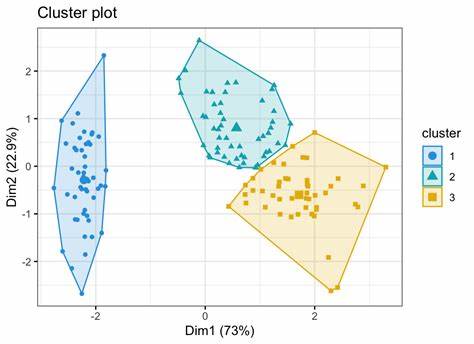
Anomaly Detection:
Fraud Detection: Identifying unusual patterns in financial transactions that may indicate fraudulent activity.
Network Intrusion Detection: Detecting abnormal behavior in network traffic to prevent cyber attacks.
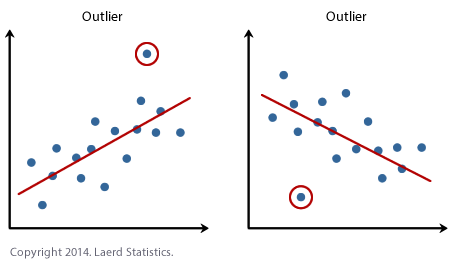
Association Rule Learning:
Market Basket Analysis: Discovering associations between products frequently purchased together in a retail store.
Web Page Recommendations: Suggesting related articles or products based on user browsing patterns.
PCA (Principal Component Analysis):
Feature Reduction in Image Processing: Reducing the dimensionality of images while preserving essential features for tasks like facial recognition.
Gene Expression Analysis: Analyzing gene expression data to identify patterns related to diseases or biological processes.
Reinforcement Learning:
Game Playing: Teaching a computer agent to play games like chess or Go by learning from its actions and the resulting rewards.
Robotics Control: Training a robot to perform tasks like walking or grasping objects through trial and error learning in simulated environments.
Amazing Resources:
Follow me on linkedin: Md. Musfikur Rahman Sifar | LinkedIn
Subscribe to my newsletter
Read articles from Md. Musfikur Rahman Sifar directly inside your inbox. Subscribe to the newsletter, and don't miss out.
Written by
